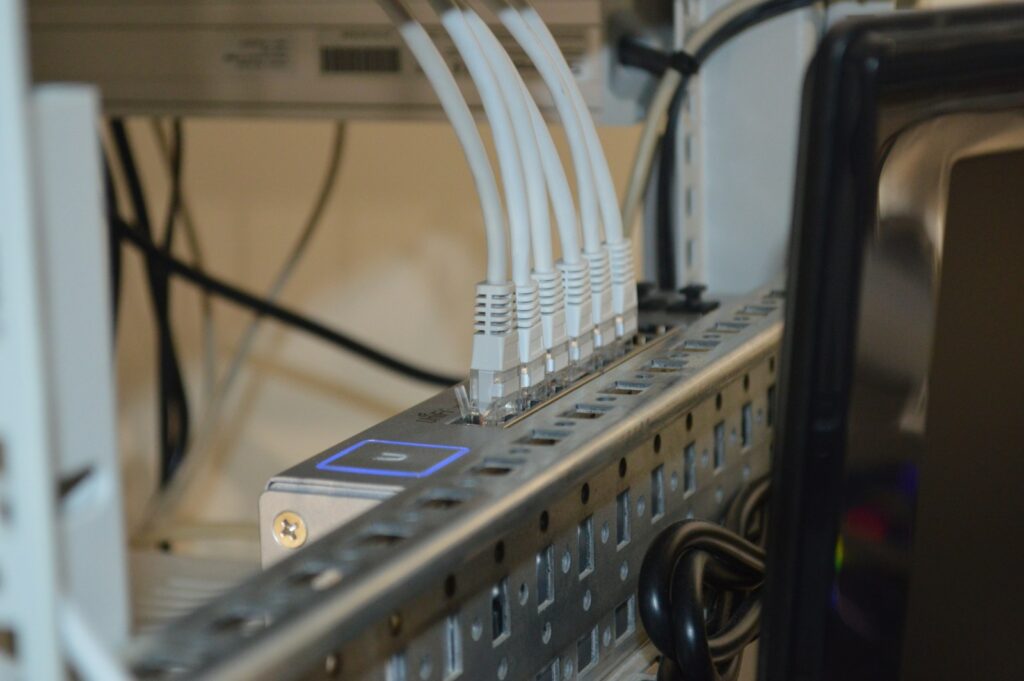IPv4 vs IPv6: Understanding the Differences and Why They Matter for ProxyTee Users

In the world of internet protocols, understanding the nuances between IPv4 and IPv6 is crucial, especially when utilizing proxy services like ProxyTee. These two versions of the Internet Protocol dictate how data packets are addressed and routed across networks. This guide will dive deep into their differences, similarities, and why the transition to IPv6 is so important for the future of the internet, and how it impacts ProxyTee users.
What is the Internet Protocol (IP)?
The Internet Protocol (IP) is the core communication protocol of the Internet. It dictates the addressing, routing, and transmission of data packets between devices across networks. Think of it like the postal system for the internet, ensuring that every data packet reaches its intended recipient.
Each device connected to a network possesses a unique numeric label called an IP address. This address allows devices to locate and communicate with each other. If you’ve ever wondered about your public IP, you can check websites like “What’s My IP Address,” which will show your address and a rough location. However, using a proxy service like ProxyTee will hide your actual IP for more privacy.
What is IPv4?
IPv4, short for Internet Protocol version 4, is the fourth version of the protocol. It was the first version implemented and widely used in large networks. Despite newer technology, it remains the most recognized version for device identification within networks.
An IPv4 address looks like this: 192.168.0.1. It consists of four numbers, each from 0 to 255, separated by dots. These numbers form a 32-bit binary sequence, used to identify a device on the network.
What is IPv6?
IPv6 is the latest version of the Internet Protocol, intended to replace IPv4. It was developed to address IPv4’s shortcomings and is especially significant considering the explosion of internet-connected devices. It achieved Internet Standard status in 2017 and is now gaining more and more recognition and support.
Here’s an example of an IPv6 address: 2001:0db8:85a3:0000:0000:8a2e:0370:7334. An IPv6 address consists of eight 16-bit hexadecimal values separated by colons. Its 128-bit structure allows for far more unique addresses than IPv4.
Similarities Between IPv4 and IPv6
Both IPv4 and IPv6 are different iterations of the same communication protocol and, as such, share common key aspects:
- They uniquely identify devices on networks.
- They route data packets across networks.
- They use binary numbers for IP addresses.
- They support manual address assignment.
- They use error-checking and packet fragmentation.
- They have broadcasting and multicasting abilities.
- Both support Variable Length Subnet Masks (VLSM).
IPv4 and IPv6 can also co-exist within the same infrastructure using mechanisms like dual-stack implementations and tunneling protocols. This ensures a smooth transition period and keeps both protocols viable.
Why Transition to IPv6?
The primary driver for IPv6 is address exhaustion. IPv4’s 32-bit structure cannot accommodate the growing number of internet-connected devices. IPv6’s 128-bit structure solves this problem while offering other significant benefits:
- End-to-End Connectivity: IPv6 eliminates the need for Network Address Translation (NAT), enabling more direct and efficient communication.
- Stateless Address Autoconfiguration (SLAAC): Devices can generate their own IP addresses, reducing manual configuration.
- Improved Routing: IPv6 uses simplified headers and hierarchical addressing, improving network efficiency.
- Enhanced Security: IPv6 has built-in IPsec for authentication and encryption, ensuring better data protection.
- Global Accessibility: Unlike IPv4, which initially reserved many addresses for the U.S., IPv6 ensures fair global allocation.
Benefits of IPv6 over IPv4
Besides solving the address shortage, IPv6 brings several key enhancements over its predecessor, including:
- No Geographical Limitations: Unlike IPv4, where half of addresses were originally reserved for the USA, IPv6 address spaces will be accessible to anyone globally, making it a fair playing field.
- End-to-End Connectivity: IPv6 eliminates the need for Network Address Translation (NAT), where many private devices share a single public IPv4 address, which introduces added complexity. With IPv6 each device can have a public IP for more direct communication between devices on the internet.
- Stateless Address Autoconfiguration: IPv6 devices can automatically generate their own IP addresses by using network prefixes and MAC addresses, streamlining device configuration. This is in contrast to the manual assignment required in IPv4.
- Efficient Routing: IPv6 utilizes simplified header structures and hierarchical addressing, making data routing more efficient and improving network speed.
- Enhanced Security: IPv6 features built-in security measures like IPsec to enhance privacy, as well as end-to-end encryption and authentication to provide greater protection for network data.
- Better Quality of Service: With flow labels and traffic prioritization, IPv6 improves the delivery and quality of network traffic.
Why Isn’t IPv6 More Popular Yet?
Despite its advantages, IPv6 adoption has been slow for several reasons:
- Lack of End-User Incentive: Consumers don’t see immediate benefits, making it difficult to justify the investment.
- Compatibility Challenges: Many devices and ISPs still rely on IPv4, requiring a gradual transition.
- High Implementation Costs: Upgrading to IPv6 infrastructure requires significant time and resources.
The IPv4 vs IPv6 transition is a nuanced issue, which comes with more complexities than one may initially perceive.
Final IPv4 vs IPv6 Comparison
Here are some critical differences:
- IPv4 remains the more commonly used IP version for the time being.
- IPv6 has 128-bit addresses whereas IPv4 has 32-bit.
- IPv6 addresses are longer than IPv4 addresses, making them harder to memorize, but easier for technology to process.
- IPv6 has integrated QoS.
- IPv6 has IPsec for security.
- IPv6 employs longer, fixed packet headers.
- IPv6 eliminates the need for Network Address Translation (NAT).
- Multicasting is part of IPv6’s design, not an add-on.
- IPv6 has enhanced features that lead to more complexity.
For a detailed overview, check the comparison table below:
| IPv4 | IPv6 | |
|---|---|---|
| IP Address | 4 numbers (e.g., 192.168.0.1) | 8 hexadecimal groups (e.g., 2001:db8::1) |
| IP Address Length | 32-bit | 128-bit |
| Number of IP Addresses | 4.3 billion | 340 undecillion |
| Header Length | 20 to 60 bytes | 40 bytes |
| Address Types | Unicast, multicast, broadcast | Unicast, multicast, anycast |
| Local Address Management | Address Resolution Protocol (ARP) | Neighbor Discovery Protocol (NDP) |
| Address Configuration | Manual or via DHCP | Manual, SLAAC, DHCPv6 |
| Security | Depends on individual applications | Based on IPsec |
| Encryption and Authentication | Not provided | Provided |
| Fragmentation | Carried out by sender and forwarding routers | Carried out only by the sender |
| Packet Flow Identification | Not available | Available |
| Checksum Field | Available | Not available |
| VLSM Support | Available | Available |
To better understand the foundational differences, you can also check out this detailed comparison by AWS, which breaks down IPv4 and IPv6 in terms of structure, speed, and real-world use cases.
ProxyTee and IPv6: The Future of Proxies
Whether you use IPv4 or IPv6, your IP can give others data about who you are and where you are located. Therefore, concealing your IP address is highly important, especially in regards to privacy and security. Using a proxy server is highly effective at doing so. As the leading residential proxy provider, ProxyTee delivers unlimited bandwidth, and offers over 20 million IP addresses from over 100 countries. Using its automatic IP rotation system and diverse protocol compatibility, ProxyTee users will have peace of mind when going about their online activities.
Key features of ProxyTee include:
- Unlimited Bandwidth: No need to worry about bandwidth overages.
- Global IP Coverage: 20M+ IPs from over 100 countries for worldwide access and targeting.
- Multiple Protocol Support: Supports HTTP and SOCKS5 protocols for flexible usage.
- User-Friendly Interface: Easy to use for beginners, minimal set up time.
- Auto-Rotation: IPs rotate at 3 to 60 minute intervals to avoid detection.
- API Integration: Easily integrate all services for automation.
- Affordable Pricing: Competitive rates, up to 50% lower than other providers.
FAQ
Which is more popular, IPv4 or IPv6?
Currently, IPv4 remains more widely used, though IPv6 adoption is gaining momentum as new technologies take off.
How many addresses have IPv4 and IPv6?
IPv4 provides roughly 4.3 billion addresses, whereas IPv6 can provide an unfathomable 340 undecillion addresses.
Who wins the IPv4 vs IPv6 speed comparison?
As the transition to IPv6 has not been completely adopted globally, there will be no clear cut victor in the IPv4 vs IPv6 speed comparison. However, IPv6 generally is faster, thanks to the removal of NAT, optimized routing and improved packet processing. IPv6 is still in early implementation which may lead to less data, therefore no definitive answer can be given as to which is better in regards to speed.
Should I use IPv4 or IPv6?
Choosing between IPv4 or IPv6 varies depending on the user needs, and whether that aligns with scalability or compatibility. Whilst IPv4 is supported most broadly at this time, IPv6 is the future of the internet, and will gradually become the standard as time progresses. Your device and browser will typically default to the best version for the network in most use-case scenarios. Ultimately it does not always have to be one or the other and is a case of the best choice for you.
Am I using IPv4 or IPv6?
To see which IP you are using, use online tools or your network settings on your device. You can also use cmd (windows) or terminal (Mac) and using command ipconfig or ifconfig respectively to reveal IP info.
Does it matter if your proxy provider does not support IPv6?
It may limit your accessibility to websites that are IPv6-only and are not using legacy IPv4 compatibility features, should your provider not support the new protocol. If IPv6 support is essential, make sure your proxy provider supports this, along with other types of IPs. ProxyTee ensures its users can fully benefit from every feature by using the latest technology to make your experience smooth, private, and safe.
